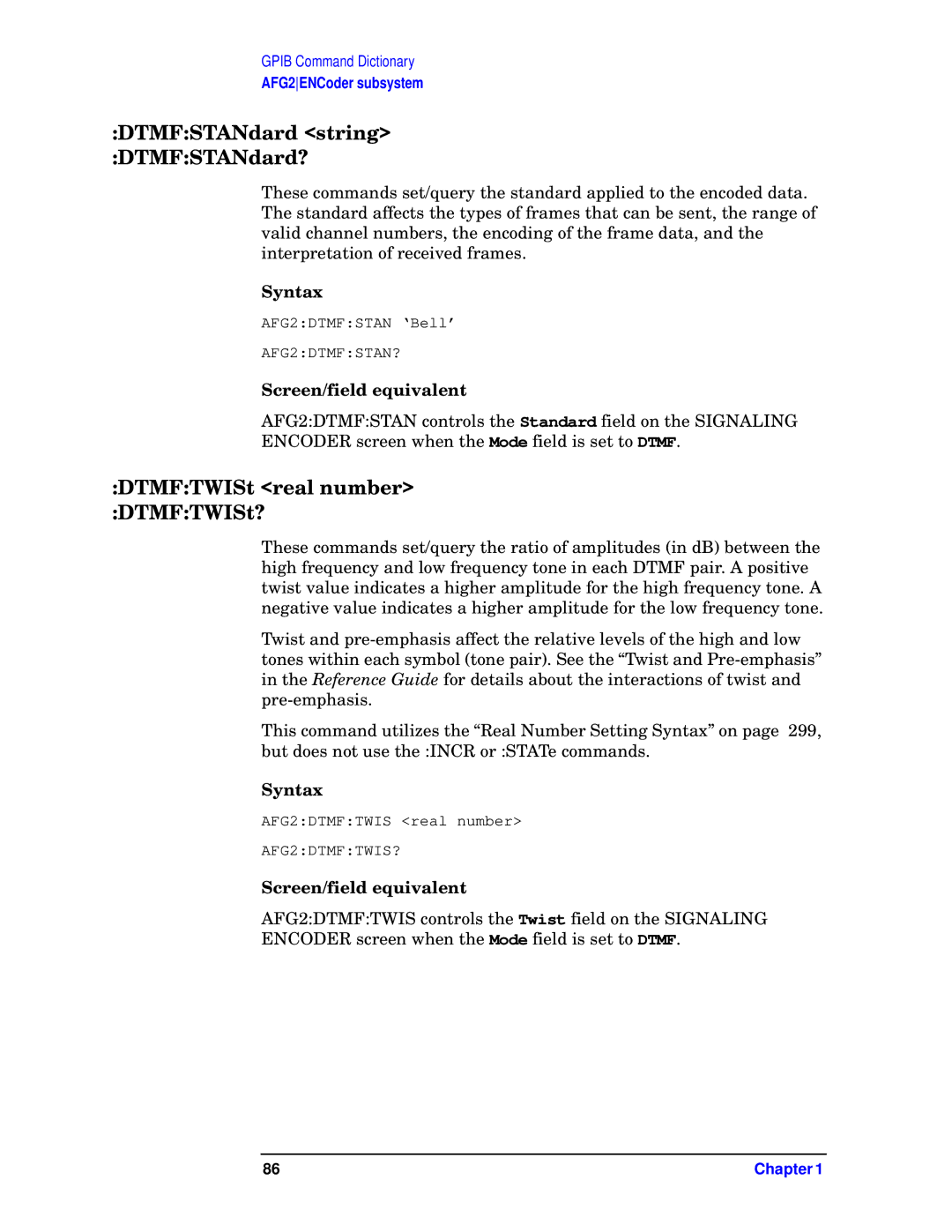GPIB Command Dictionary
AFG2ENCoder subsystem
:DTMF:STANdard <string> :DTMF:STANdard?
These commands set/query the standard applied to the encoded data. The standard affects the types of frames that can be sent, the range of valid channel numbers, the encoding of the frame data, and the interpretation of received frames.
Syntax
AFG2:DTMF:STAN ‘Bell’
AFG2:DTMF:STAN?
Screen/field equivalent
AFG2:DTMF:STAN controls the Standard field on the SIGNALING ENCODER screen when the Mode field is set to DTMF.
:DTMF:TWISt <real number> :DTMF:TWISt?
These commands set/query the ratio of amplitudes (in dB) between the high frequency and low frequency tone in each DTMF pair. A positive twist value indicates a higher amplitude for the high frequency tone. A negative value indicates a higher amplitude for the low frequency tone.
Twist and
This command utilizes the “Real Number Setting Syntax” on page 299, but does not use the :INCR or :STATe commands.
Syntax
AFG2:DTMF:TWIS <real number>
AFG2:DTMF:TWIS?
Screen/field equivalent
AFG2:DTMF:TWIS controls the Twist field on the SIGNALING
ENCODER screen when the Mode field is set to DTMF.
86 | Chapter 1 |
